There's nothing quite like a warm bowl of Binignit to brighten up any Filipino afternoon. I first learned to make this purple coconut dessert soup from my trip in Cebu, and it's been my go-to comfort food ever since. Think of it as a sweet, creamy soup filled with all the good stuff – tender purple yam, sweet potatoes, chewy rice balls, and fresh jackfruit, all swimming in rich coconut milk.
Every time I make this recipe at home, my kitchen fills with the same wonderful smell. The best part? When the ube halaya melts into the coconut milk, creating that beautiful purple color that makes this dessert extra special.
Don't worry if you're new to Filipino cooking, I've simplified this binignit recipe to make it easy for anyone to recreate at home.
Cultural Notes
Binignit holds deep cultural significance in Visayan regions, especially during Holy Week. The tradition of preparing this dish brings families together and represents the rich culinary heritage of Filipino culture. The purple color from ube adds a distinctive touch that makes this version special and Instagram-worthy.
Jump to:
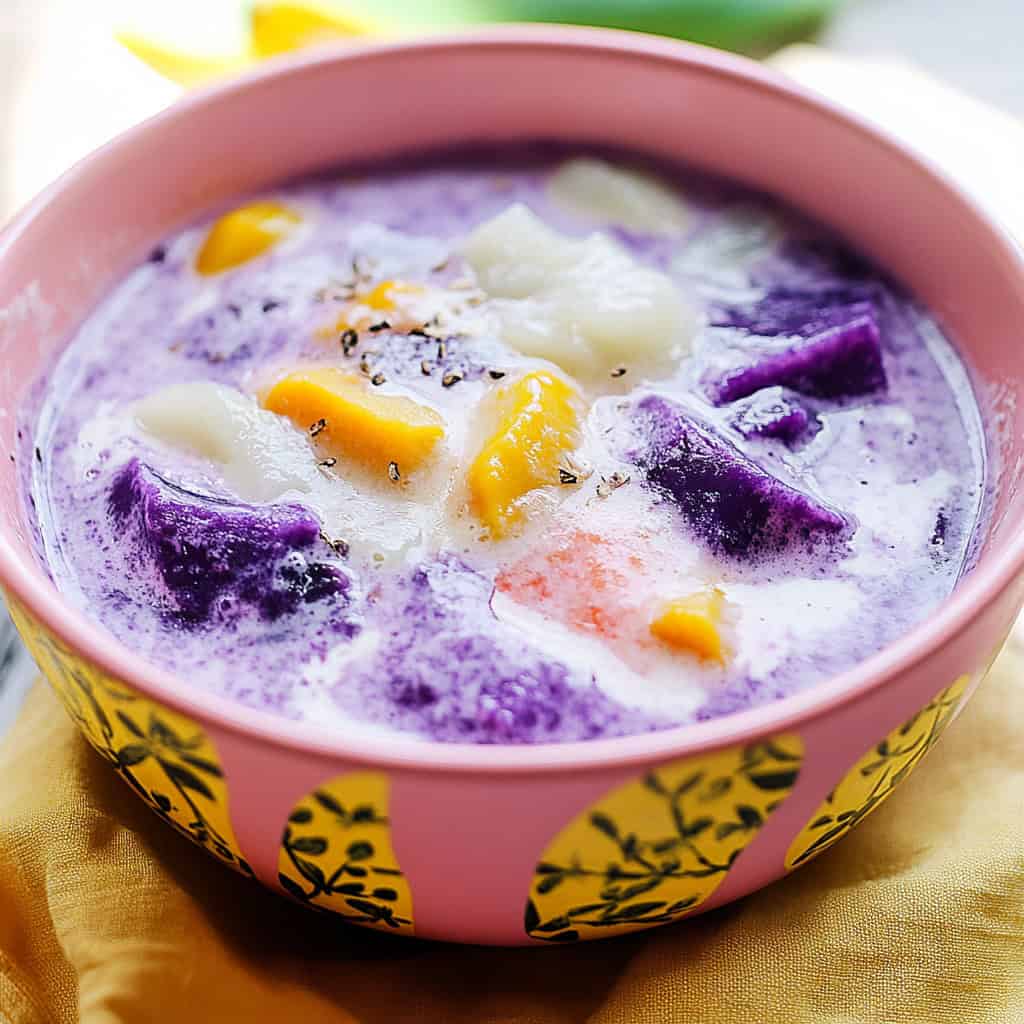
Why You'll Love This Recipe
- Authentic taste that brings back childhood memories of merienda time
- Complex layers of flavor from multiple ingredients working in harmony
- Versatile recipe that can be served hot or cold
- Perfect balance of creamy coconut milk and natural sweetness
- A complete meal-worthy dessert packed with nutritious ingredients
- Beautiful purple hue from ube that makes it Instagram-worthy
Ingredients
The ingredients in Binignit reflect Filipino cultural heritage and practical wisdom. Root crops like sweet potatoes, taro, and purple yam were chosen because they're filling, nutritious, and locally abundant throughout the Philippines. Coconut milk forms the creamy base, utilizing the coconut trees that thrive in the tropical climate.
The bilo-bilo (glutinous rice balls) add a chewy texture while representing Chinese influence on Filipino cuisine. Fruits like jackfruit and plantains provide natural sweetness and are widely available in local markets.
Together, these ingredients create a complete, satisfying dish that showcases the Philippines' agricultural bounty and demonstrates how Filipino cooks historically transformed simple, accessible ingredients into something extraordinary and comforting.

For the Base:
- 4 cups coconut milk (first and second extraction)
- 2 cups water
- 1 cup granulated white sugar
Root Crops and Fruits:
- 1 cup sweet potatoes, diced into 1-inch cubes
- 1 cup taro roots, diced into 1-inch cubes
- 1 cup purple yam (ube), diced into 1-inch cubes (optional)
- 1-2 cups cooked ube halaya (ube jam)
- 2 cups plantains (saging na saba), diagonally sliced
- 1 cup ripe jackfruit, sliced into strips
Add-ins:
- 2 cups colorful sago/tapioca pearls, precooked
- 12-20 pieces glutinous rice balls (bilo-bilo)
Equipment
- Large Heavy-Bottom Pot: Essential for even heat distribution and preventing ingredients from burning at the bottom. The heavy base maintains consistent temperature throughout the cooking process.
- Wooden Spoon: Ideal for gentle stirring without breaking the delicate ingredients. Metal utensils can damage the soft root crops and bilo-bilo.
- Measuring Cups and Spoons: For accurate measurements to ensure balanced flavors.
- Sharp Knife and Cutting Board: Needed for uniform cutting of root crops and fruits, ensuring even cooking.
- Colander: Used for draining and rinsing the cooked sago pearls before adding them to the mixture.
- Medium Bowls: For preparing and organizing ingredients before cooking.
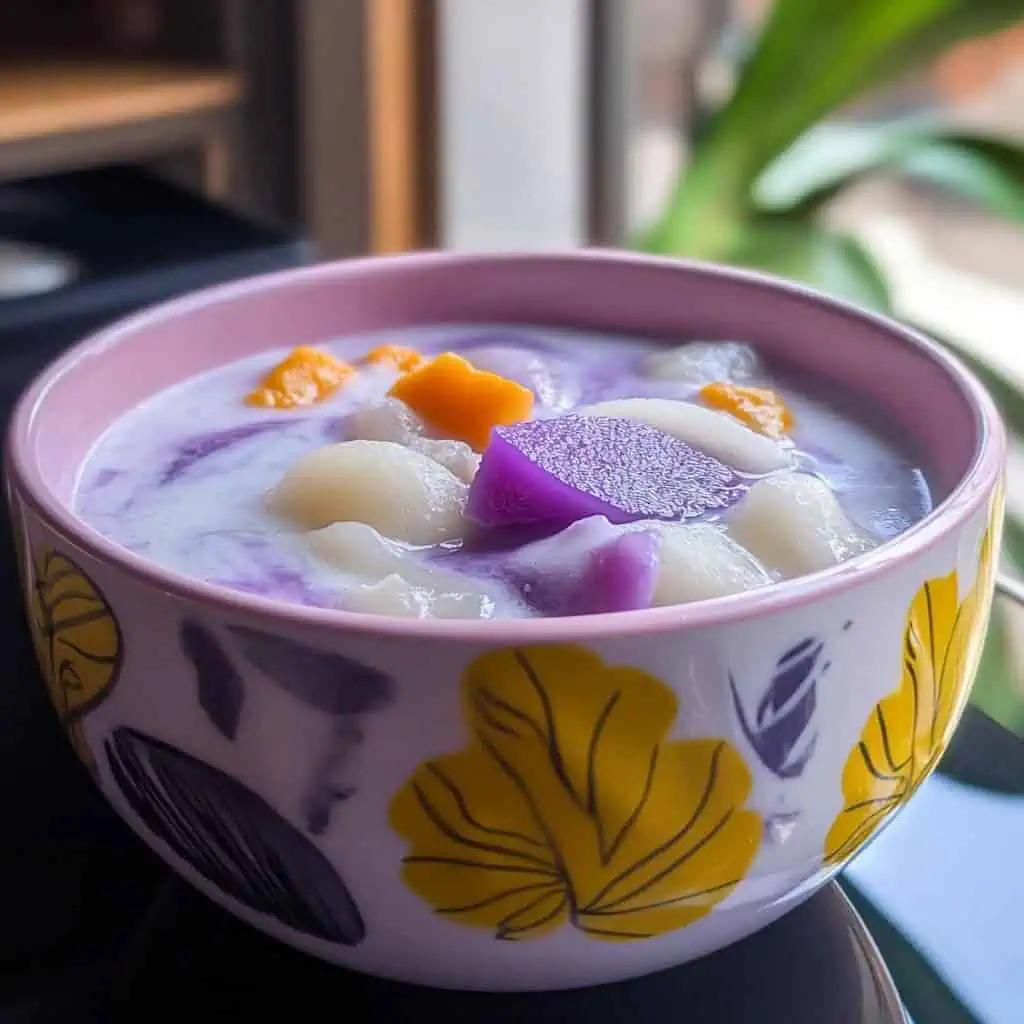
How To Make
- Before starting, prepare all your ingredients: dice the sweet potatoes, taro roots, and purple yam into 1-inch cubes. Slice the plantains diagonally and cut the jackfruit into strips. Cook your sago pearls according to package instructions and set aside.
- Make your bilo-bilo by mixing glutinous rice flour with water until you can form small balls slightly smaller than marbles. Set these aside.
- Fill your large pot with 2 cups of water and bring it to a boil over medium-high heat. Once boiling, add 1¾ cups of coconut milk and wait for it to boil again.
- Lower the heat to medium-low and add your diced sweet potatoes, purple yam, and taro roots. Let these simmer gently for 8 minutes, stirring occasionally to prevent sticking.
- Pour in the remaining coconut milk and add the sugar. Gently drop in your prepared bilo-bilo. Let everything simmer for 7 minutes, stirring gently from time to time. You'll know the bilo-bilo is cooked when they float to the surface.
- Add your sliced plantains and the ube halaya. Stir well to dissolve the ube jam into the coconut milk. Cook for 2 minutes.
- Add the jackfruit pieces and cook for another 2 minutes, stirring gently.
- Finally, add your pre-cooked sago pearls and simmer for just 1 minute more. The sauce should now be thick and creamy, and all ingredients should be tender.
- Turn off the heat and let your Binignit rest for 5 minutes. This helps the flavors settle and the sauce thicken slightly more.
- If the Binignit is too thick, you can add a little warm coconut milk. If it's too thin, simmer it a bit longer or add more ube halaya.
- Serve your Binignit either hot or cold in individual bowls. You can add an extra drizzle of coconut milk on top if you like.

Tips from Lola's Kitchen
- Fresh is best: Use freshly extracted coconut milk when possible for the most authentic flavor and creaminess.
- Size matters: Make bilo-bilo slightly smaller than a marble for proper cooking—if too large, they may remain undercooked in the center.
- Layered cooking: Add ingredients in the proper order, as some cook faster than others. Root crops need the longest cooking time.
- Gradual sweetening: Add sugar in stages and taste as you go—the natural sweetness of fruits will contribute to the overall flavor.
- Bottom-up stirring: Always stir from the bottom of the pot to prevent ingredients from sticking and burning.
- Consistency check: The perfect Binignit should coat the back of a spoon but still flow easily—thick yet soup-like.
- Rest period: Allow the Binignit to rest after cooking. This helps the flavors meld and the starch from the root crops to thicken the mixture naturally.
- Color enhancement: For a more vibrant purple color, slightly mash some of the cooked ube before adding the ube halaya.
Substitutions
- Sweet potatoes: Can use purple sweet potatoes, regular yams, or even butternut squash in a pinch.
- Taro: Can substitute with more sweet potatoes or even potatoes if unavailable.
- Ube: If fresh ube is unavailable, you can use more ube halaya or skip it entirely (though you'll lose the signature purple color).
- Fresh jackfruit: Canned jackfruit in syrup works perfectly well—just drain and rinse lightly.
- Coconut milk: Canned coconut milk can be used, but reduce water accordingly as canned versions are often more concentrated.
- Sago pearls: Can use all-white pearls, mini tapioca pearls, or even small jelly cubes for a modern twist.
- Bilo-bilo: In an emergency, you can substitute with small pieces of mochi or even commercial glutinous rice balls.
- Plantains: Can use regular bananas but add them at the very end as they cook much faster.
Troubleshooting
- Mixture too thick: Add warm coconut milk gradually, a quarter cup at a time, until you reach the desired consistency.
- Mixture too thin: Continue simmering uncovered to reduce liquid, or add a tablespoon or two more of ube halaya to help thicken.
- Bilo-bilo remains hard: They need more cooking time. Keep simmering on low heat until they become translucent and float.
- Root crops cooking unevenly: Next time, ensure all pieces are cut to uniform size, or consider cooking harder root crops for a few minutes before adding softer ones.
- Sago pearls clumping together: Rinse them in cool water after cooking and before adding to the Binignit.
- Coconut milk curdling: Keep heat low after adding coconut milk and avoid vigorous boiling.
- Not purple enough: Add more ube halaya or a tiny drop of purple food coloring (though traditional recipes avoid artificial colors).
- Too sweet: Balance with a squeeze of calamansi or lime juice, or add more unsweetened coconut milk.
Storage & Reheating
- Refrigeration: Store in an airtight container for up to 3 days. The mixture will thicken considerably when cold.
- Freezing: Not recommended as the texture of the root crops and bilo-bilo will change, becoming mealy when thawed.
- Reheating on stovetop: Place desired portion in a pot, add 2-3 tablespoons of fresh coconut milk, and heat gently on low, stirring occasionally until warm throughout.
- Microwave reheating: Place in a microwave-safe bowl with a splash of coconut milk, cover loosely, and heat for 1-2 minutes, stirring halfway through.
- Cold serving: Binignit can be served cold straight from the refrigerator as a refreshing dessert during hot weather.
- Texture restoration: If bilo-bilo becomes too firm after refrigeration, a gentle reheating will restore their soft, chewy texture.
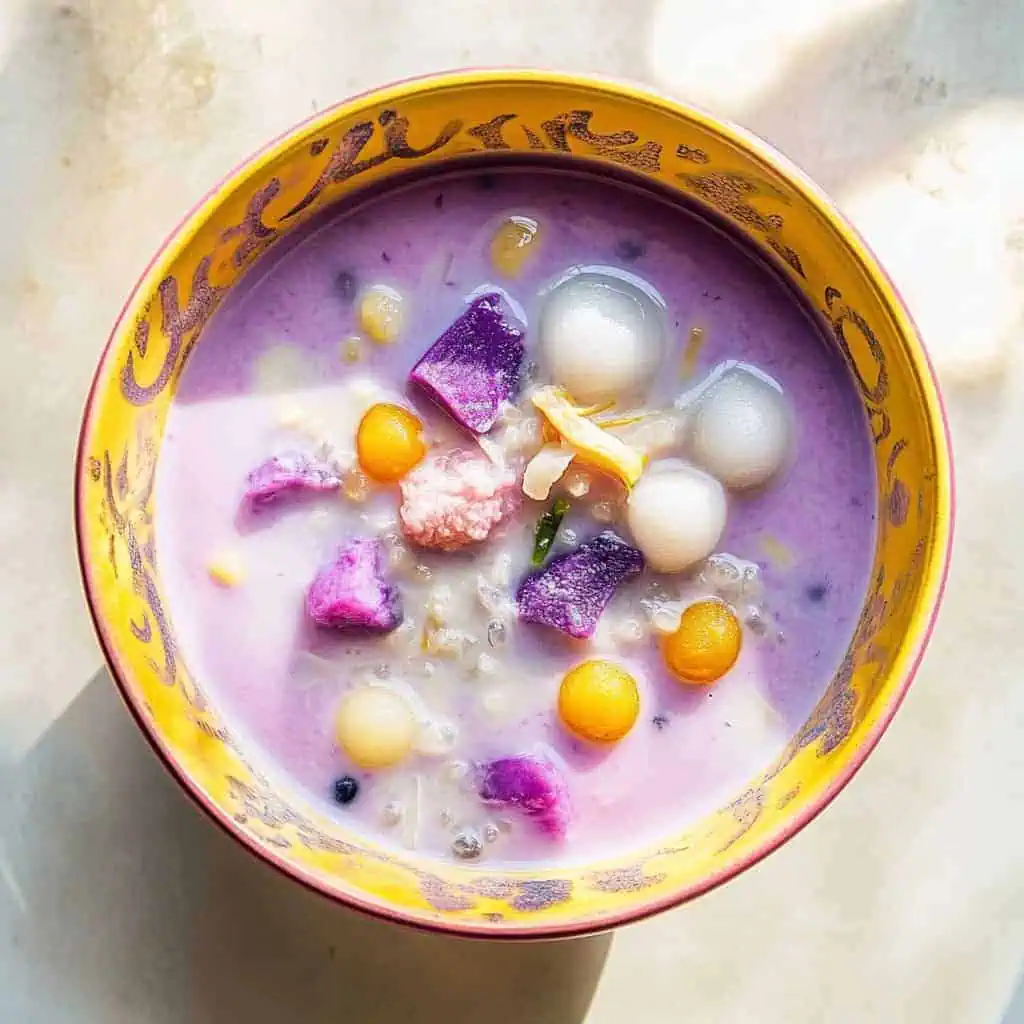
FAQ
Can I make Binignit ahead of time for a party?
Yes, it's actually better when made a day ahead as the flavors develop overnight. Reheat gently with additional coconut milk to restore the creamy consistency.
Why is my Binignit not turning purple?
The purple color comes from ube. If your Binignit isn't purple enough, add more ube halaya and ensure it fully dissolves into the coconut milk.
Can I reduce the sugar in this recipe?
Absolutely. You can adjust according to your taste and the natural sweetness of the fruits used. Start with half the sugar and add more as needed.
How do I know when bilo-bilo is perfectly cooked?
Properly cooked bilo-bilo will float to the surface, appear slightly translucent, and have a chewy but not gummy texture when tested.
Why did my coconut milk curdle during cooking?
Coconut milk can curdle if boiled vigorously or cooked at high temperatures. Always maintain low to medium-low heat after adding coconut milk and stir frequently.
Is there a quick version of Binignit I can make?
For a faster version, use canned coconut milk, pre-made bilo-bilo (available in Asian markets), and canned jackfruit. Focus on just a few root crops rather than all varieties.
Can I make this in a slow cooker?
Yes, cook the root crops on high for 2-3 hours, then add coconut milk, sugar, bilo-bilo, and fruits and cook for another 30-60 minutes on low.
Is Binignit served as a dessert or a main dish?
It's traditionally served as a heavy merienda (afternoon snack) or dessert, but it's substantial enough to be a light meal on its own, especially during Holy Week.
Related
Looking for other recipes like this? Try these:
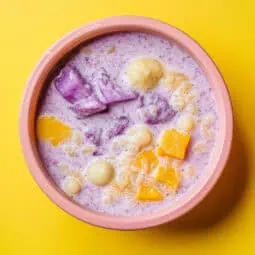
Filipino Binignit (Ginataang Halo-halo)
Equipment
- Large Heavy-Bottom Pot (Kaldero) For even heat distribution and preventing burning
- Wooden Spoon (Sandok Kahoy) For gentle stirring without breaking ingredients
- Measuring cups and spoons (Panukat) For accurate measurements
- Sharp knife and cutting board For uniform ingredient preparation
- Colander (salaan) For draining cooked sago pearls
- Medium bowls For ingredient preparation
Ingredients
For the Base:
- 4 cups coconut milk gata - First and second extraction
- 2 cups water tubig
- 1 cup granulated white sugar asukal
Root Crops and Fruits:
- 1 cup sweet potatoes kamote, diced into 1-inch cubes
- 1 cup taro roots gabi, diced into 1-inch cubes
- 1 cup purple yam ube, diced into 1-inch cubes (optional)
- 1-2 cups cooked ube halaya ube jam
- 2 cups plantains saging na saba, diagonally sliced
- 1 cup ripe jackfruit langka, sliced into strips
Add-ins:
- 2 cups colorful sago/tapioca pearls precooked
- 12-20 pieces glutinous rice balls bilo-bilo
Instructions
- Before starting, prepare all your ingredients: dice the sweet potatoes, taro roots, and purple yam into 1-inch cubes. Slice the plantains diagonally and cut the jackfruit into strips. Cook your sago pearls according to package instructions and set aside.
- Make your bilo-bilo by mixing glutinous rice flour with water until you can form small balls slightly smaller than marbles. Set these aside.
- Fill your large pot with 2 cups of water and bring it to a boil over medium-high heat. Once boiling, add 1¾ cups of coconut milk and wait for it to boil again.
- Lower the heat to medium-low and add your diced sweet potatoes, purple yam, and taro roots. Let these simmer gently for 8 minutes, stirring occasionally to prevent sticking.
- Pour in the remaining coconut milk and add the sugar. Gently drop in your prepared bilo-bilo. Let everything simmer for 7 minutes, stirring gently from time to time. You'll know the bilo-bilo is cooked when they float to the surface.
- Add your sliced plantains and the ube halaya. Stir well to dissolve the ube jam into the coconut milk. Cook for 2 minutes.
- Add the jackfruit pieces and cook for another 2 minutes, stirring gently.
- Finally, add your pre-cooked sago pearls and simmer for just 1 minute more. The sauce should now be thick and creamy, and all ingredients should be tender.
- Turn off the heat and let your Binignit rest for 5 minutes. This helps the flavors settle and the sauce thicken slightly more.
- If the Binignit is too thick, you can add a little warm coconut milk. If it's too thin, simmer it a bit longer or add more ube halaya.
- Serve your Binignit either hot or cold in individual bowls. You can add an extra drizzle of coconut milk on top if you like.
- Store any leftovers in the refrigerator for up to 3 days. When reheating, do so gently over low heat or in the microwave, adding a splash of coconut milk to loosen the mixture.
Tips from Lola's Kitchen
- Use fresh coconut milk when possible for the best flavor
- Make bilo-bilo slightly smaller than a marble for proper cooking
- Cook root crops separately if you want to ensure even cooking
- Add sugar gradually and taste as you go
- Stir from the bottom to prevent ingredients from sticking
- The consistency should be thick but still soup-like
Nutrition
The Story Behind Binignit
Binignit has been warming Filipino hearts for generations, especially in the Visayas region where it originated. This purple-tinted coconut dessert soup tells the story of the Philippines' abundant tropical ingredients and the creativity of Visayan home cooks who transformed simple root crops and fruits into something extraordinary.
In Cebu, Bohol, and other Visayan provinces, Binignit holds a special place during Holy Week, particularly during Lent and Good Friday. While many know it as Ginataang Halo-halo in Luzon, the Visayan Binignit stands out for its signature purple color from ube (purple yam) and its extra-thick, creamy consistency. Local families have traditionally prepared this filling dessert soup during times when meat wasn't eaten, making it a perfect meat-free comfort food that could sustain people throughout the day.
What makes Binignit truly special is how it showcases Filipino root crops like ube, kamote (sweet potato), and gabi (taro) – ingredients that have helped feed Filipino families through generations. The addition of bilo-bilo (sticky rice balls) was inspired by the Chinese influence on Filipino cuisine, while the use of gata (coconut milk) reflects the abundance of coconuts in the Philippines. Even the saging na saba (cooking bananas) and langka (jackfruit) in the recipe highlight the country's tropical bounty.
Today, while you'll find Binignit served year-round in Filipino homes and restaurants, it remains most popular during the rainy season and Holy Week. Modern versions might add new ingredients or adjust the sweetness, but the core of what makes Binignit special stays the same – it's a dish that brings families together, carries cultural history, and satisfies both hunger and nostalgia with every spoonful.
Ask any Visayan family about their Binignit memories, and you'll likely hear stories of gathering in their grandmother's kitchen, watching the purple soup simmer on the stove while the aroma of coconut milk filled the air. It's these shared experiences that have made Binignit more than just a dessert – it's a beloved part of Filipino food heritage that continues to be passed down through generations.
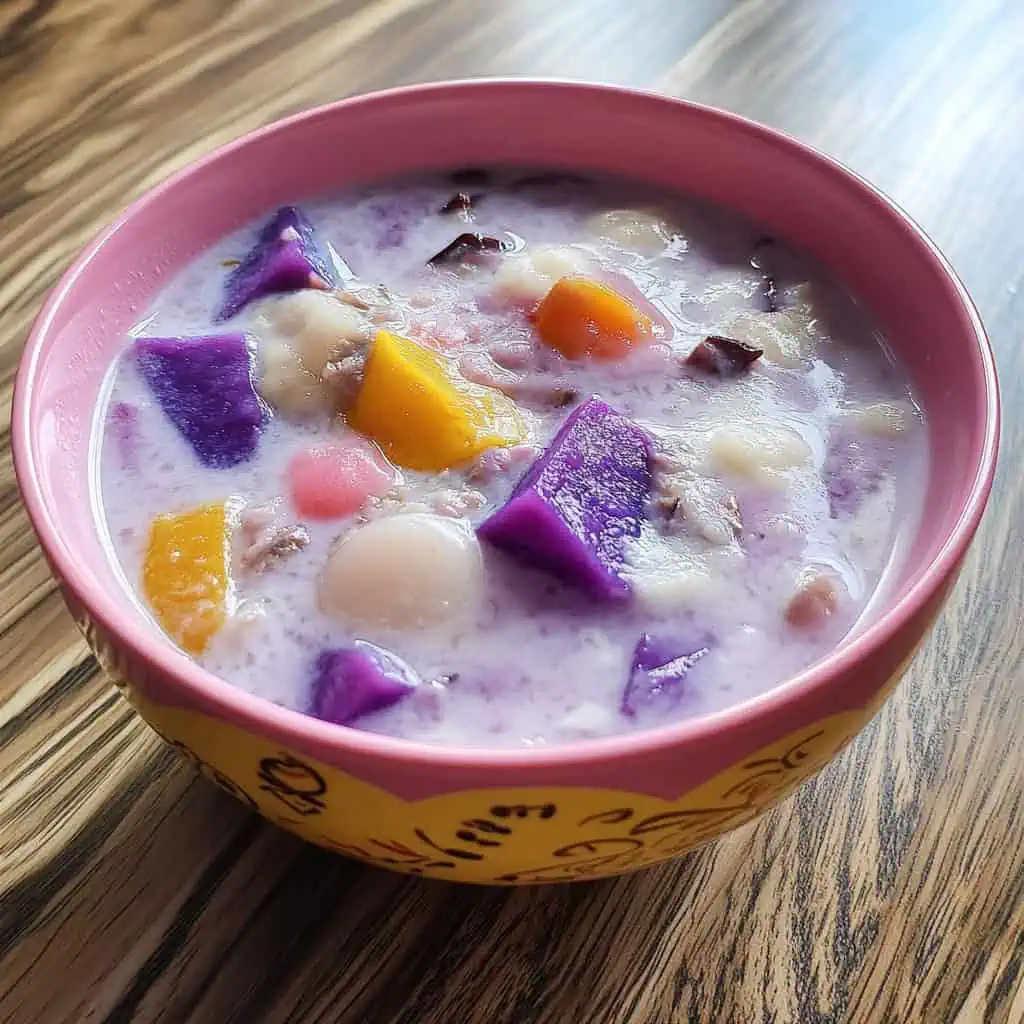

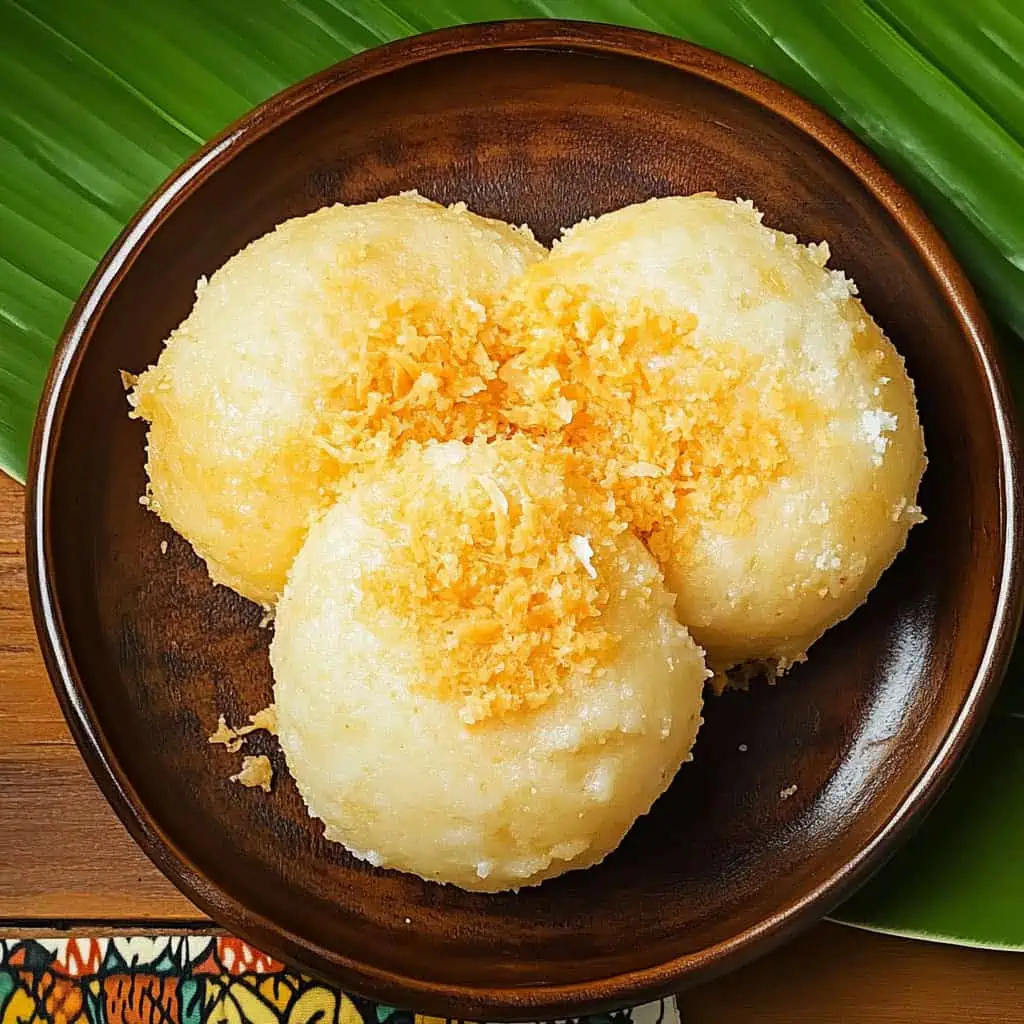
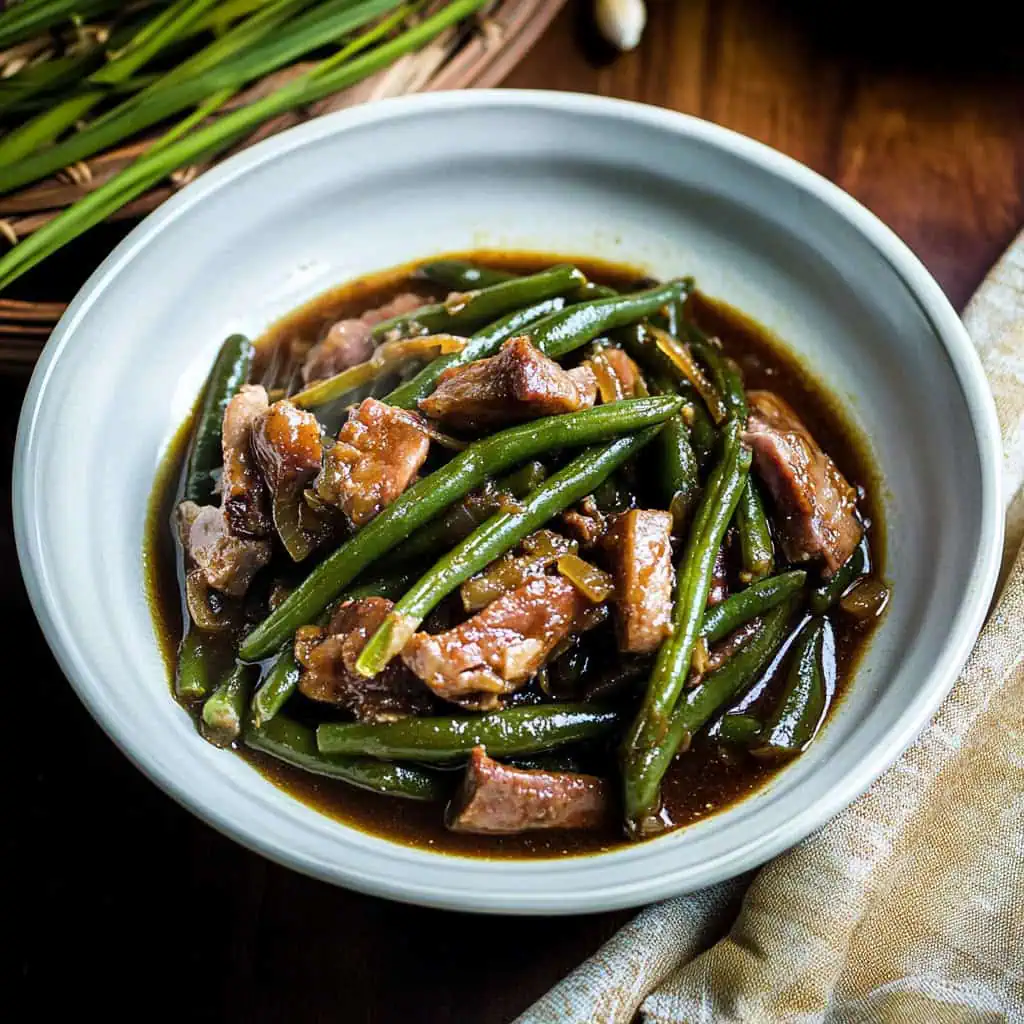
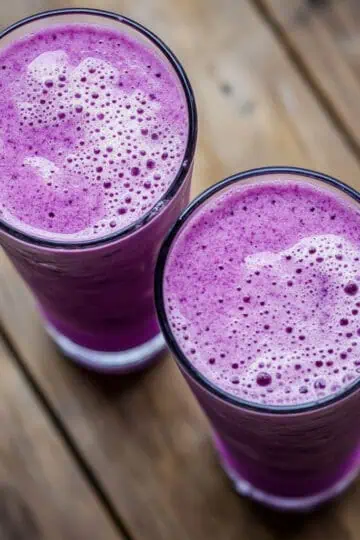
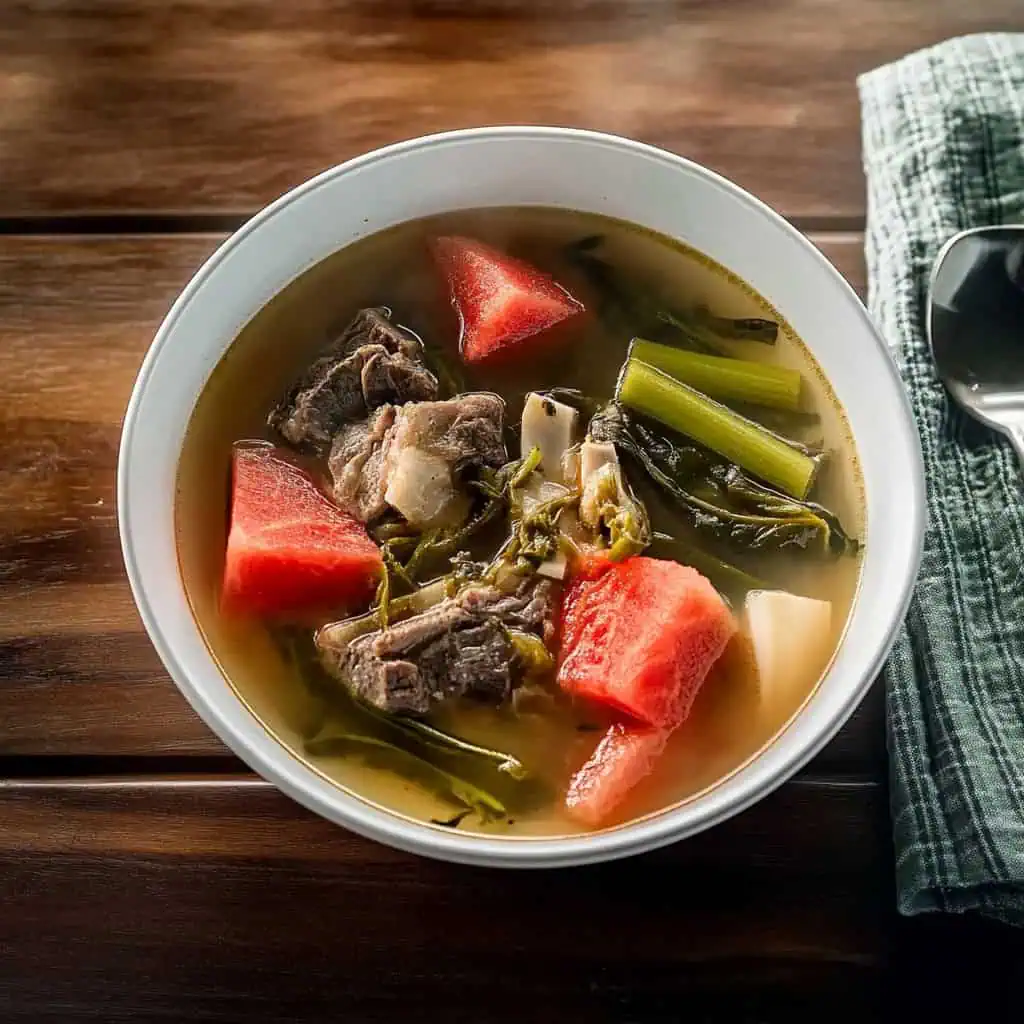


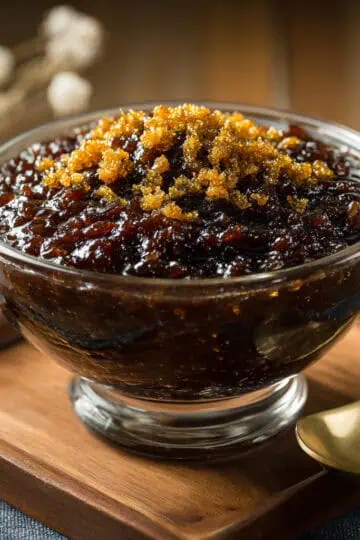
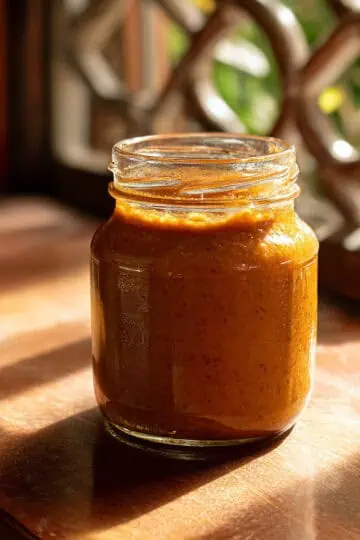
Comments
No Comments